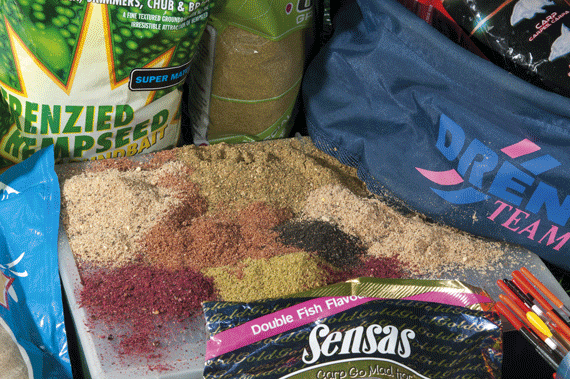new flanker
Question
Hello There!
I'm new to rugby and have only been to 3 practices and my first
game is this coming Saturday and it's a tournament!
Please give me any tips or advice for a flanker. i know i will need
to tackle a lot. I'm just afraid of getting in someone's way. do
you think i'll even get the ball? how do you know if you need to
ruck or if there are too many people in there already?
anything information would be highly appreciated. THANX!
Answer
Jessica,
What follows are the basic requirements for a flankers, and a quick lesson in loose play.
FLANKER (WING FORWARDS, BREAKAWAYS)
Major requirements:
-Ability to win the ball at breakdowns
-Ability to tackle well and be destructive to opposition play
-Possess the ball skills and mobility
-Ability to support backs and initiate or continue attack
-Possess an extremely high work rate during a game (Fitness is paramount!)
-Ability to communicate with No. 8, Scrumhalf, and Fly half is essential
The flanker is generally the most mobile and aggressive player on the team with a goal of creating conditions to initiate second phase rugby. Additionally, he must have above average ball skills (Hand and Foot), mobility, and ability to anticipate good angles of run (to get where the opponent should be going). This requires him to be able to read the game.
Essential skills:
Contact:
-To scrummage effectively, safely and consistently
-To provide stability from the side of the scrum
-To provide maximum protection to the scrumhalf
-To support in the line-out
-To legally prevent opposition from breaking through the line-out
-To tackle from close and open field positions. Flankers are known for making make those cool open field tackles.
-To maul and ruck-low body position for driving forward. Many teams use the pod formation off the rucks and mauls to punch the ball forward. Often it is the flanker that establishes the initial breakdown and prepares the second pod.
-Continuous commitments to secure balls and maintain possession.
-To provide the initial contact from set play in the defense. Nothing is so frightening to a fly half than a flanker bearing down on him the same time the ball is coming to him.
Running:
-To run with determination and speed
-To understand lines of movement and angles of pursuit
-To run to support the man with the ball. If all the forwards, it is usually the flanker that provides the initial support in both the offense and defense.
-Ability to cope with continued physical contact and strenuous effort with short bursts of speed (ability to accelerate) and sustained play
Handling:
-To control ball, and when required, release it properly at back of scrum
-To catch and deflect a ball at the back of line-outs, or provide support to a jumper
-To pass the ball at varying lengths and speeds
-To give and take a short lifted pass
-To manipulate play by ripping and rolling from a maul
-To deal with a ball on the deck and pick it up quickly at speed
Position: There are specialist requirements for blind side and open side breakaway play. Like the props, each has a specialist role to play in attack and defense.
The Open Flanker tends to be quicker, more agile, able to go to ground (controlled falling to the ground to set up a clean ruck) easier, and occupies the back of the line-out and open side of scrums that determine his angles of run in set play.
The Blind side Flanker tends to be bigger, possesses greater strength, and occupies the blind side of scrums and the fifth position in the lineout with a greater contribution to the physical integrity of the set pieces. His contribution to the physical integrity of the set is also different.
NOTES:
-Work rate and physical intensity will be high. The flanker is expected to be everywhere on the pitch supporting his own ball and being disruptive to the opposition抯 play.
-Primary tasks are to ensure that the ball is won and /or possession is maintained at the breakdown, to support play, and to nullify the opposition抯 attacking moves,
-Tend towards disruptive activity by maintaining constant pressure on the opposition, especially at the scrumhalf to flyhalf interchange.
-It is crucial to maintain correct angles of pursuit and positioning on the field in attack and defense.
-Flankers engage in a great deal physically demanding contact requiring well-developed strength in the arms, shoulders and thighs, and speed and endurance for both interval and repetition running.
-All around athletic ability, fitness, and durability is vital-you should be able to run like a back as well as play effectively in set forward play.
Loose Play or Second Phase (General)
a. After Contact - Loose play occurs when the ball leaves the set formation. The divisions between forwards and backs then will to blur. The key to successful second phase is what happens after contact, usually a tackle initiating a ruck or a maul. A rugby player, when tackled, must release the ball-either on the ground or to a teammate-immediately after contact is made with the ground. The attacking team抯 objective is to maintain possession and forward momentum. It is to the attacker抯 advantage to keep the play moving after the breakdown. In the defense, it is generally the object of the forwards to gain control of the ball and provide a stable platform to initiate the counter-attack.
b. Fundamental Concepts
Possession: Rugby is a possession sport; if a team does not have the ball, it can not score. Almost all individual skills are geared to maintaining or gaining possession of the ball. It is important to not only retain possession of the ball, but also to prevent the opposition from getting possession of the ball. The focus of loose play is to ensure that one抯 team maintains possession of the ball, especially after a break down in play.
Attack: If the ball is not moved forward, a team cannot score.
Support: Support is critical to the effectiveness of possession and attack. As the ball moves from player to player, members must support the ball carrier, i.e. be where they can catch a pass, pick the ball up from the ground, or field a kick. The attacking team does not want the ball to die and stop their attack.
Communicate: Without communication, the other concepts will not work effectively.
c. Ruck - A ruck is a loose variation of a scrum. A ruck is formed when two opposing players are bound together over the ball on the ground. Players will bind into the ruck and attempt to win possession of the loose ball. As with the scrum, only the feet can be used to get the ball out of the ruck. Rules for body position in the scrum are the same for the ruck and the maul (come in low, on sides, spine in line, head up, etc.). We want to ruck on the attack. Once the contact has been made, continue moving the ball forward until momentum is stopped, then post (place the ball on the ground) the ball. Rucks are very important in the attack and contested zones for continuing to move the ball forward. The ball is placed back into play faster than in mauls, and provide the opportunity to take advantage of a slow or disorganized defense.
d. Maul - When the ball carrier has been held up by his opponents, but not taken to ground, members of his team (usually forwards) will bind onto him in attempt to protect the ball (maintaining possession of the ball) and provide a stable base to get the ball out (initiate an attack). The opposition is attempting to take the ball away. Unlike a ruck where the ball is on the ground, in a maul the ball is being held by one team while the other team attempts to grab it away. Once possession is secure, the ball is usually passed to the waiting Scrumhalf who runs or passes the ball. Rules for body position in the scrum are the same for the ruck and the maul (come in low, on sides, spine in line, head up, etc.). We generally want to maul on defense to slow the pace of the game and regroup. The basic concept of modern rugby is to keep the ball in play. As a result, if the ball comes unplayable, a scrum is awarded to the defending team. If you are a defender, you want to 搒eal?the ball by making it unplayable. If you are attacking, you want to keep the maul moving forward and when stopped, get the ball out under control as quickly as possible.
While perhaps too late for your tournament, it should be good information for you.
Good luck,
Deane Shephard
Stuttgart RC
Improving on the wing.
The Next Level


